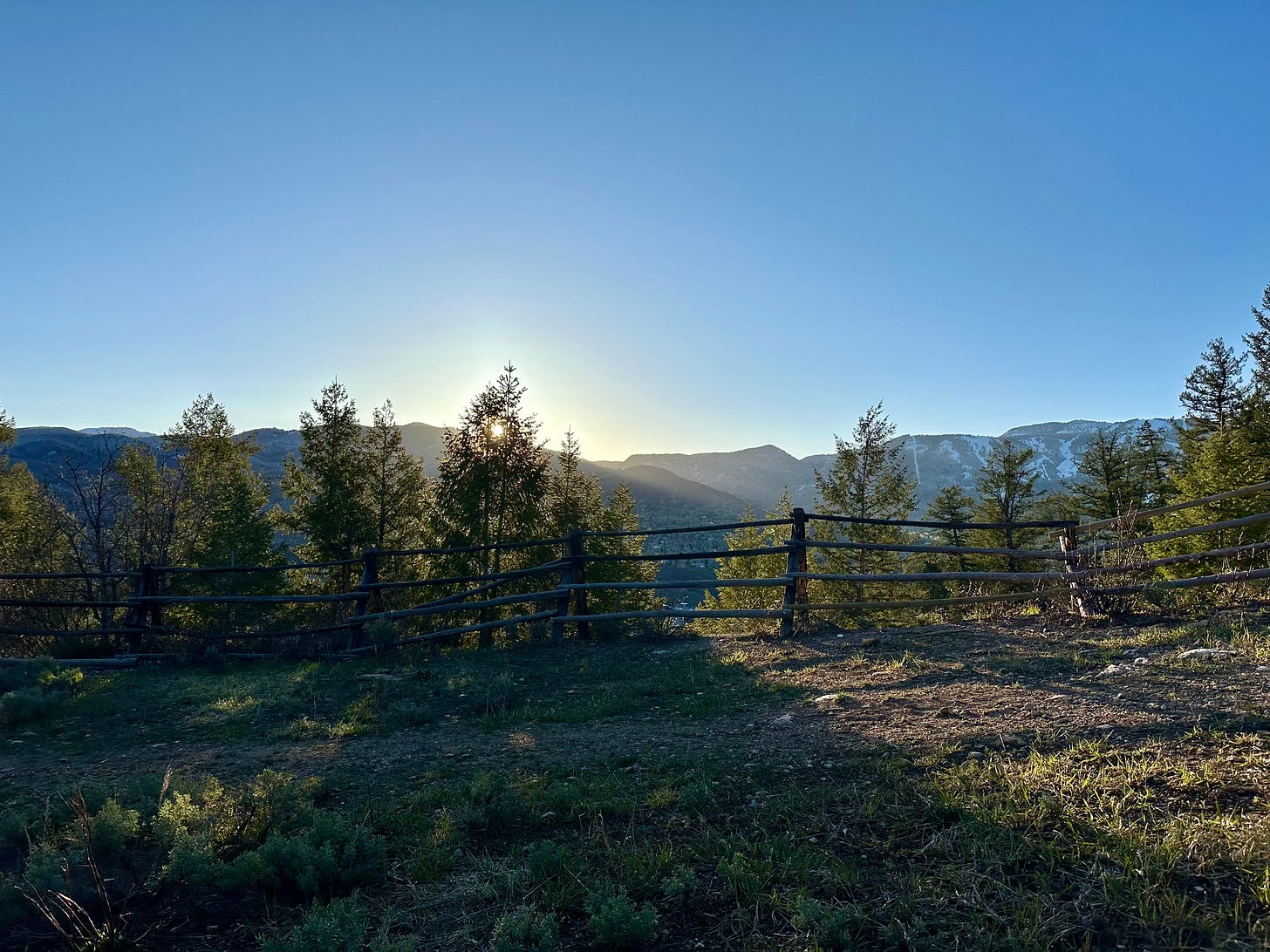If you’ve ever felt like you’re failing at meditation, I want to offer some hope and let you know that it’s not you.
It’s bad teaching.
“Empty your mind.”
Those three little words, so often said, are a huge red flag - a sign the teacher can describe the destination, but not the road to get there.
So how do we “get there” with meditation?

Don’t Play the Results
In my acting classes we say, “Don’t play the results.” It creates flat, bad acting when actors try to play an emotion - aka skip to the end rather than go through a process of discovery.
And we get flat, bad meditations when we’re trying to play the results first.
The meditation teacher who says “Empty your mind,” is describing a result they have experienced - not the process that created the result.
Imagine a Spanish teacher saying on Day 1 of class, “Speak Spanish.” And then nada, no more instruction. How many students in that class will continue to try to learn and how many will quit, thinking they’re too dumb or Spanish is too hard?
Meditation is a process, just like learning a language or building muscle. It needs to be practiced in small increments many times before results become consistent.
“Empty your mind” is not an actionable instruction.
And an empty mind isn’t necessary for meditation!
That’s why I often ask people to activate their imagination, which you can explore in the guided meditation included at the end.
Before the Results
Taking a long view of meditation removes the pressure from any one meditation session.
If your mind is all over the place during a meditation, no big deal! It was just one practice session. It doesn’t have to be perfect or “right” or really long. It just has to get done.
A result like an empty mind can take years.
Just like it can take years to become fluent in another language. That doesn’t mean you should judge each language lesson a failure if you don’t end up fluent by the end.
If we’re expecting to get results every meditation session, we’ll get disappointed and quit.
It’s about finding that middle path.
Practice Makes Results
Let’s be honest. Meditation can feel like a chore.
Then, if you compare yourself to meditation nerds like me, who started meditating as a teenager 25 years ago, it can seem like the road ahead is just too long. Why keep slogging through this often boring activity?
That gym analogy comes in so handy for meditation teachers! We don’t always feel great during a workout, but that doesn’t mean we don’t get the gains.
What’s a good meditation session?
The one that you did.
The perfect meditation session you planned on having but skipped because you got busy, that doesn’t count as meditating.
No matter where your mind went during a meditation session, the fact that you did it means that you’ve taken a step toward patience, peace, and clarity.
Gaining Fluency
I remember the effort involved in my first years of learning Spanish. My brain labored to understand new words and grammar rules, then I’d have translate Spanish into English in my head. It was messy, like all learning.
Then, at a certain point, I stopped translating everything in my head. I just thought and spoke in Spanish.
Once I was bilingual, whole new worlds opened up to me. The number of people I could communicate with expanded dramatically.
It’s the same with meditation. We labor to learn to its language, but then at a certain point we realize we’ve gained fluency.
Meditation cultivates patience, peace, and clarity.
Fluency in meditation means an ability to watch our thoughts and feelings with more objectivity, and then make conscious choices both on and off the cushion.
And meditation is so much more than sitting on a cushion! Walking, cooking, caring for pets and loved ones, pausing to breathe and think before you speak - those are all forms of meditation.
In fact, for active people and neurodivergent individuals, I most often don’t recommend long seated meditations.
The Rewards
If you feel like you’re slogging through meditation, or life, remember that’s how it goes sometimes.
There are times we struggle just to do the minimum.
Just remember: a clear mind is the result of meditation, not how you do it.
But every little bit of meditation that you do do, however you feel about it, helps create more consistent peace. And just like muscles get stronger gradually, the “peace muscle” takes some time to develop.
But if you keep going, just keep going, all the meditation and mindful moments add up - to peace.
If you’re just starting with meditation or want something new, here’s a guided meditation for you, recorded in Yellowstone!
You won’t have to empty your mind, instead you’ll picture this beautiful place.
Peaceful Valley - a Yellowstone Meditation
Thanks so much for some of your precious time and attention today! I appreciate that you took a step toward peace by reading this. Enjoy the guided meditation and remember the answer to this question:
What’s a good meditation session?
The one that you did.
In peace,
Juniper
Acknowledgements
This writing and all the images came from Juniper McKelvie and were produced in Montana, on the ancestral homelands of the Bitterroot Salish, Upper Pend d’Oreille, the Kootenai, and the Blackfeet First Nations; and in Colorado on the ancestral homelands of the Yamparika Ute First Nation.
I’m deeply grateful to the many generations of First Nations peoples who carefully preserved these beautiful landscapes and the diversity of plants, animals, people, and ecosystems.









